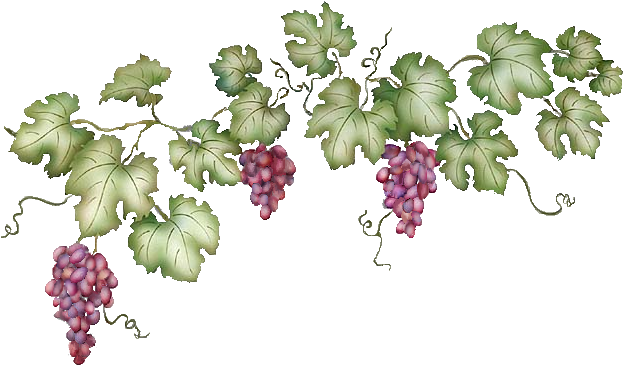Grow a Vertical Vegetable Garden in a Small Space with Hog Wire
Vertical farming is cultivating plant or animal life within a skyscraper greenhouse or on vertically inclined surfaces. The modern idea of vertical farming uses techniques similar to glass houses, where natural sunlight can be augmented with artificial lighting.
http://en.wikipedia.org/wiki/Vertical_farming
Vertical Gardening
Up, up, and away! Squeeze more vegetables into small spaces with trellises.
How to Grow Vegetables Vertically @ Wikihow
Vertical Gardening Techniques for Maximum Returns @ Auntie Dogma’s
Carrots, Planting, Growing, Harvesting ~ Carrots in Containers
Botanical name: Daucus carota @ Old Farmer’s Almanac
Plant type: Vegetable
USDA Hardiness Zones: 4, 5, 6, 7, 8, 9, 10
Sun exposure: Full Sun
Soil type: Sandy
Soil pH: Neutral
Carrots are a popular root vegetable that are easy to grow in sandy soil. They are resistant to most pests and diseases, and are a good late season crop that can tolerate frost. Not all carrots are orange; varieties vary in color from purple to white.
Planting
- Plan to plant seeds outdoors 3 to 5 weeks before the last spring frost date.
- Make sure your soil is free of stones; carrots need deeply tilled soil that they can push through.
- Have you ever seen a carrot that has grown “legs” or forked? Fresh manure, or even recently applied rotted manure, can cause carrots to fork and send out little side roots. Don’t use it before you plant your seeds.
- Plant seeds 3-4 inches apart in rows. Rows should be at least a foot apart.
Care
- Gently mulch to retain moisture, speed germination and block the sun from the roots.
- Soil should be well drained and loose to prevent forking and stunting of the root growth.
- Once plants are an inch tall, thin so they stand 3 inches apart. Snip them with scissors instead of pulling them out to prevent damage to the roots of remaining plants.
- Water at least one inch per week.
- Weed diligently.
- Fertilize 5-6 weeks after sowing.
- Carrots taste much better after a couple of frosts. Following the first hard frost in the fall, cover carrot rows with an 18-inch layer of shredded leaves to preserve them for harvesting later.
Pests
- Wireworms
- Flea Beetles
- Aster Yellow Disease will cause shortened and discolored carrot tops and hairy roots. This disease is spread by pests as they feed from plant to plant. Keep weeds down and invest in a control plan for pests such as leafhoppers. This disease has the ability to overwinter.
Harvest/Storage
- Carrots are mature at around 2 ½ months and ½ inch in diameter. You may harvest whenever desired maturity is reached.
- You may leave mature carrots in the soil for storage if the ground will not freeze.
- To store freshly harvested carrots, twist off the tops, scrub off the dirt under cold running water, let dry and seal in airtight plastic bags, and refrigerate. If you simply put fresh carrots in the refrigerator, they’ll go limp in a few hours.
- Carrots can be stored in tubs of moist sand for winter use.
Recommended Varieties
- ‘Bolero’: resists most leaf pests.
- ‘Nantesa Superior’: sweet flavor, adapts to any soil.
- ‘Thumberline’: round carrot, good for clumpy or clay soil.
Recipes
Wit & Wisdom
Carrots are biennial plants. If you leave them in the ground, the tops will flower and produce seeds the second year.

*************


Squash & Zucchini Planting, Growing, Harvesting Guide ~ How to Container Gardening
Botanical name: Cucurbita
Plant type: Vegetable
USDA Hardiness Zones: Varies
Sun exposure: Full Sun
Soil type: Loamy
Squash is a seasonal vegetable. It is very susceptible to frost and heat damage, but with proper care it will produce a bumper crop with very few plants.
There are many varieties of summer squash to choose from, including zucchini. The main difference between winter and summer varieties is their harvest time; the longer growing period gives winter squash a tougher, inedible skin. Here are their various botanical names: Cucurbita pepo (Summer squash/Zucchini), C. maxima (True winter), C. pepo (Acorn, delicata, spaghetti) , C. moschata (butternut).
Planting
- Start seeds indoors 2 to 4 weeks before last spring frost in peat pots.
- Do not seed or tranplant seeds outside until the soil temperature is 55 to 60º F for successful germination. Usually, you can seed any time from one week after the last spring frost to midsummer. You may be able to have two crops per season if you time it right.
- The outside planting site needs to receive full sun; the soil should be moist and well-drained, but not soggy
- Work compost or aged manure into the soil before planting for a rich soil base.
- To germinate outside, use cloche or frame protection in cold climates for the first few weeks.
- When you transplant, take care not to damage the root ball.
- Plant seeds one inch deep and 2 to 3 feet apart.
- Most summer squashes now come in bush varieties, but winter squash is a vine plant and needs more space. They will need to be thinned in early stages of development.
Care
- Mulch plants to protect shallow roots, discourage weeds, and retain moisture.
- Plants love lots of compost and will produce better if well fed. When the first blooms appear, apply a small amount of fertilizer as a side dress application and water thoroughly.
- After harvest begins, fertilize occasionally for vigorous growth and lots of fruits.
- For all type of squash, frequent and consistent watering is recommended. Water most diligently when fruits form and throughout their growth period.
- To know when to water, use the finger method. Put your finger in the soil and if it’s dry beyond the first joint, it needs watering.
- If your fruits are misshapen, they might not have received enough water or fertilization.
Pests
- If your zucchini blooms flowers but never bears actual zucchini, or it bears fruit that stops growing when it’s very small, then it’s a pollination issue. Most squashes have separate male and female flowers on the same plant. To produce fruit, pollen from male flowers must be physically transferred to the female flowers by bees. If you do not have enough bees, you can manually pollinate with a Q-tip—or, add nearby plants that attract bees!
- Cucumber Beetle (link to pest page)
- Squash Bug (link to pest page)
- Squash Vine Borer (link to pest page)
- Blossom End Rot: If the blossom ends of your squash turn black and rot, then your squash have blossom-end rot. This condition is caused by uneven soil moisture levels, often wide fluctuations between wet and dry soil. It can also be caused by calcium levels. To correct the problem, water deeply and apply a thick mulch over the soil surface to keep evaporation at a minimum. Keep the soil evenly moist like a wrung out sponge, not wet and not completely dried out.
- Stink Bug: If your squash looks distorted with dippled area, the stink bugs overwintered in your yard. You need to spray or dust with approved insecticides and hand pick in the morning. Clean up nearby weeds and garden debris at the end of the season to avoid this problem.
- Aphids (link to pest page)
Harvest/Storage
- Harvest summer squash when small and tender for best flavor. Most varieties average 60 days to maturity, and are ready as soon as a week after flowering.
- Check plants everyday for new produce.
- Cut the gourds off the vine rather than breaking them off.
- Fresh summer squash can be stored in the refrigerator for up to ten days.
- Harvest winter squash when rind is hard and deep in color, usually late September through October.
- Winter squash can be stored in a cool, dark place until needed. It will last for most of the winter. If you have a cool bedroom, stashing them under the bed works well. They like a temperature of about 50 to 65 degrees F.
- Freezing Summer squash: Wash it, cut off the ends, and slice or cube the squash. Blanch for three minutes, then immediately immerse in cold water and drain. Pack in freezer containers and freeze.
- Freezing Winter squash: Cook as you normally would, then mash. Pack in freezer containers.
- Pull up those vines and compost them after you’ve picked everything or after a frost has killed them. Then till the soil to stir up the insects a bit.
Recommended Varieties
- ‘Goldbar’ (yellow summer)
- ‘Cocozelle’ (zucchini) dark green, slender
- ‘Butterbush’ (butternut)
- ‘Cream of the Crop’ (acorn hybrid, prize winning)
Recipes
Wit & Wisdom
Squash flowers make a tasty treat when fried in a light batter.
************
How to Grow and Care for Zucchini in Containers

Photo by Mangus Manske
Intro: Zucchini plants are hybrids with cucumbers. Growing zucchini in plant containers in kitchen gardens is easy, and your plants should produce great-tasting fruit quickly. There are a few zucchini varieties, but most are a dark green color. Some zucchini varieties are light green, yellow or orange. Because zucchini plants are large, choose a very large plant container that is at least 2 feet by 2 feet for one plant. If you crowd your zucchini plants, it will negatively affect the yield.
Scientific Name: Cucurbita pepo hybrid
Plant Type: This plant is considered an annual vegetable, although the zucchini is technically a fruit.
Light: Full sun
Water: When it comes to watering your zucchini plants, provide well-draining potting soil that is constantly moist but never soggy.
Zone: The zucchini plant is a warm-weather crop.
Fertilizer: When you prepare the potting soil for planting, introduce compost or a slow-release fertilizer. Also add a slow-release fertilizer to your zucchini plants once a month for the rest of the growing season.
Pests and Diseases: Snails and slugs can be a common garden problem with zucchini plants. Powdery mildew is prevalent in crowded plants. Keep the zucchini leaves dry when watering, and cut off affected leaves.
Propagation: Sow zucchini seeds directly outside in the kitchen garden after the last frost has passed. Plant the seeds about three-fourths of an inch deep in the potting soil. You can also begin seeds indoors in March if you want to get started early. Zucchini seeds will germinate in about a week, give or take a couple of days. Thin zucchini seedlings by cutting weak seedlings (don’t pull the seedlings out) once two true leaves have formed. Fruit will not form without bees and other pollinators. Don’t use pesticides on your zucchini that will affect pollinators.
Misc. Info: Harvest your zucchini from the kitchen garden once they’re about 8 inches long and at least 1.5 inches thick. Don’t wait too long, or the zucchini fruit will dry out and not taste as good.
Zucchini blooms are also eaten, just like pumpkin flowers, and can be fried or eaten in a quesadilla. Unlike the cucumber, zucchini fruit is usually cooked. It can be cooked in many different ways. Use your zucchini within three days.

**********
See Also …












Recent Comments